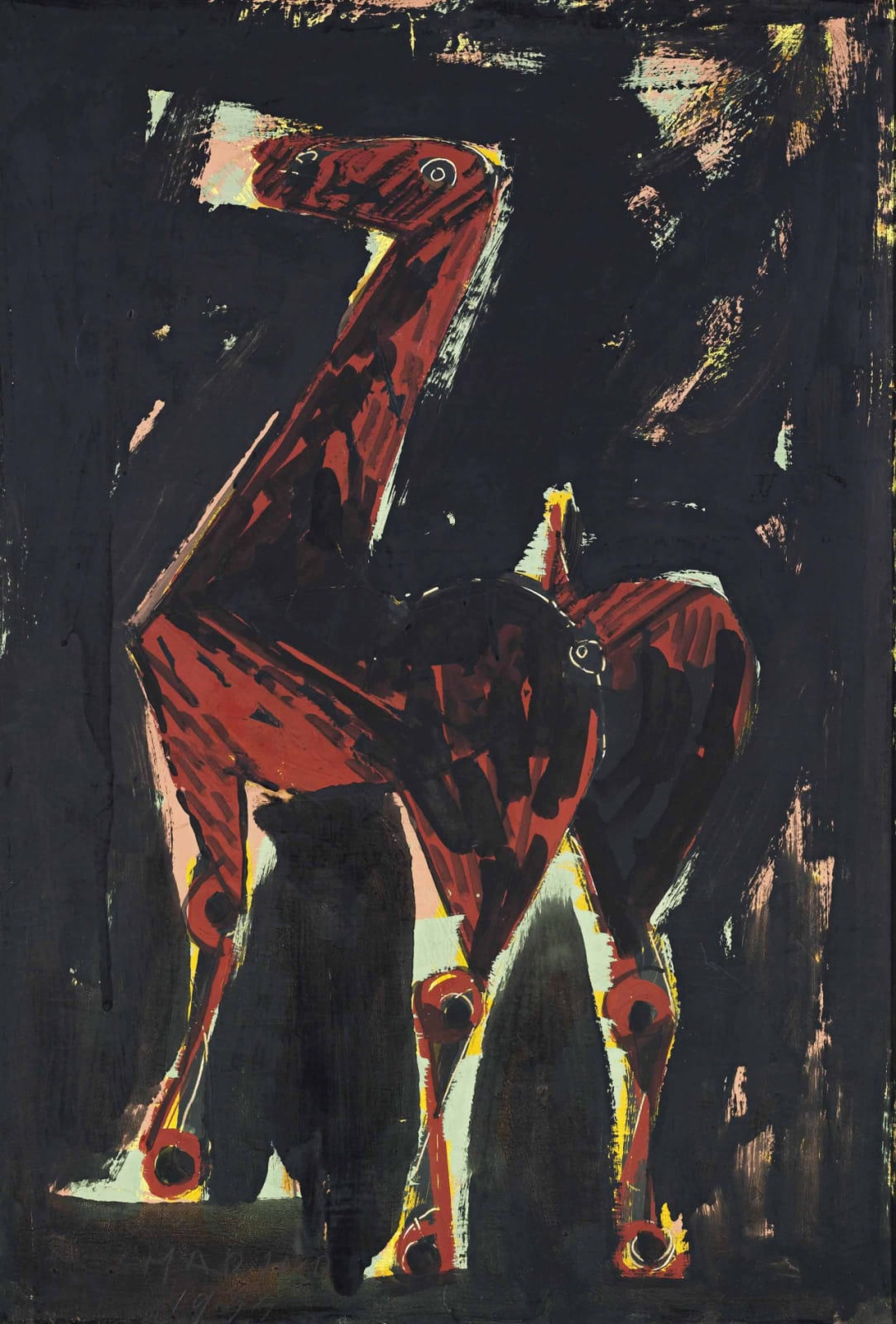Marino Marini Italian, 1901-1980
24 3/8 x 16 7/8 in
While most widely recognised as a sculptor, Marino Marini was also a prolific printmaker, engraver and painter whose subject matter ranged from imposing equestrian groups to semi abstracted figurative works. His idiosyncratic style is captured in Cavallo, a portrait of horse, depicted in a bold manner with gouache. Many of Marini’s works have a horse and rider; for Marini, this idiom encapsulated the true essence of human existence, as he once commented, “the entire history of humanity and nature can be found in the figure of the horse and rider, whatever the era. It is my way of narrating history. I need this personage to give life to the passions of man". Marini’s inherent belief in the transcendent nature of the horse and rider bestows upon his modernist work the same power of the monumental statues he was exposed to while studying in Florence. This however does not detract from his playful characterisation and application of materials that echo certain cubist and futurist influences whilst simultaneously hinting at the coming advent of abstraction.
Born in 1901, Marino Marini spent his formative years in the town of Pistoia in Tuscany, Italy. At the age of sixteen, he enrolled at the Accademia di Belle Arte in Florence before taking teaching posts in Monza. Throughout the 1920s Marini continued to explore different media becoming increasingly preoccupied by Etruscan art and counted the sculptor Arturo Martini among one of his greatest influences. Marini travelled widely throughout Europe in the subsequent years becoming close acquaintances with fellow contemporaries including Alberto Giacometti, Fritz Wotruba and Germaine Richier among others. In 1940 he received a professorship in sculpture at the prestigious Accademia di Belle Arti di Brera, Milan, where he permanently settled in 1946. Throughout his career, Marini exhibited frequently in major exhibitions such as MOMA’s Twentieth Century Italian Art show in 1949 which brought him into contact with the likes of Max Beckmann, Alexander Calder and Jean Arp. In the early 1950s his work was toured around Europe and his craftsmanship rewarded when he earnt the Grand Jury Prize for Sculpture at the 1952 Venice Biennale. In the period between 1960 and his death in 1980, Marini’s work was exhibited internationally at major institutions from the Galleria d’Arte Moderna in his native Milan to the National Museum of Modern Art in Tokyo, a testament to the far reaching and profound influence of his oeuvre.
Provenance
Denver Art Galleries, Denver
Esther Robles Gallery, Los Angeles
Anonymous sale, Sotheby Parke Bernet, Inc., New York, 19 May 1978, lot 393a
F. Caturani, acquired at the above sale
Anonymous sale, Sotheby's, New York, 23 February 2001, lot 126
Private collection, UK, acquired at the above sale
Christie’s London 16 October 2006, lot 205
Private collection, Italy, acquired at the above sale
Studio Guastalla, Milan
European private collection, acquired from the above in 2009
Christie’s New York, 6 November 2014, lot 154
Private collection, US, acquired at the above sale
